If you’re looking to invest in new camera gear, a mirrorless camera is definitely the wise choice. Whether you’re a portrait photographer, content creator, or videographer, there’s a mirrorless camera to meet your needs.
Looking for a new camera is never easy, especially with so many mirrorless options. Are you a beginner or an enthusiast? Do you want high-resolution images or top-quality video? Is the perfect camera compact and portable? These are the types of questions you need to answer to narrow down your search.
The Fujifilm X-T5 is our top choice thanks to its high-resolution APS-C sensor, 4K video recording, and retro good looks. But if that’s not the model you’re after, we have plenty more mirrorless cameras in the article below.
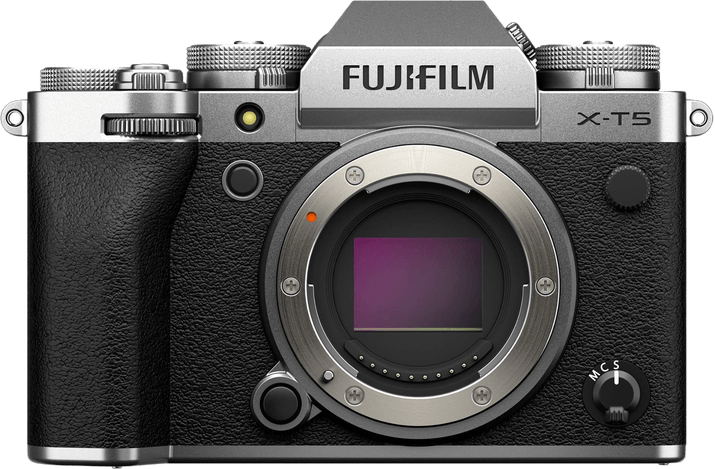
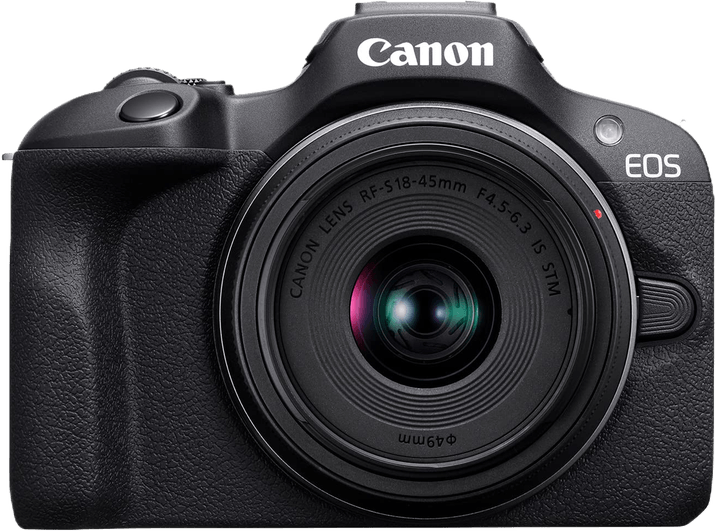
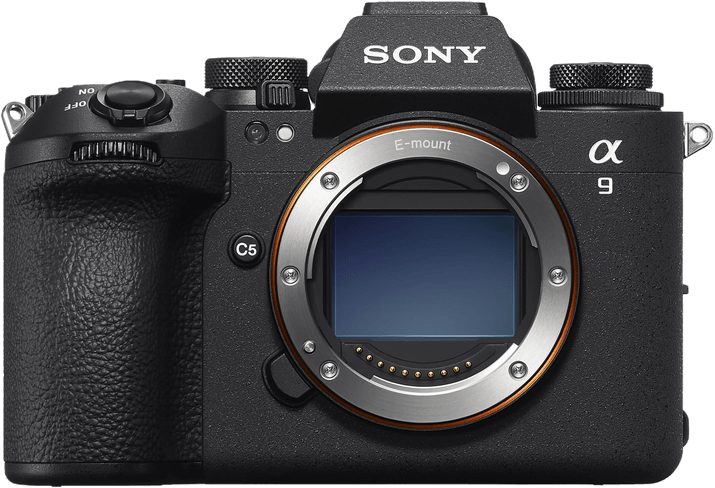
The best mirrorless camera helps you maximize your creativity and achieve your goals. Whether you’re a beginner wanting to learn new skills or a videographer creating high-end video content, you need a mirrorless camera that can do the business.
There’s no one-camera-fits-all solution. Different photographers require different cameras. Thankfully, there are many types of mirrorless cameras.
You’ll find excellent beginner cameras. There are cameras optimized for video production and vlogging. Professional photographers can also find what they need in the mirrorless camera catalog.
We’ve included a wide range of mirrorless cameras in this article, selecting the best options from each glass. It’s a concise list, but everyone can find exactly what they need.
You can see a brief rundown of all the best mirrorless cameras in the table below. We examine each camera in more detail in the following section. You can also find an FAQ section at the end if you need more information on the topic.



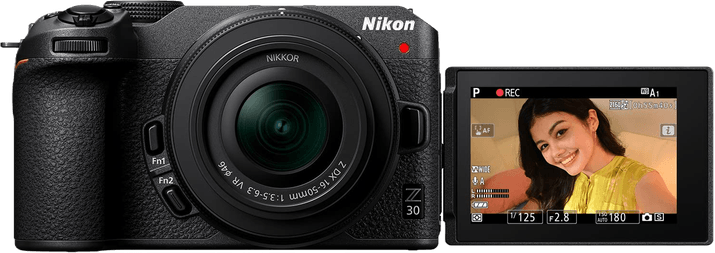
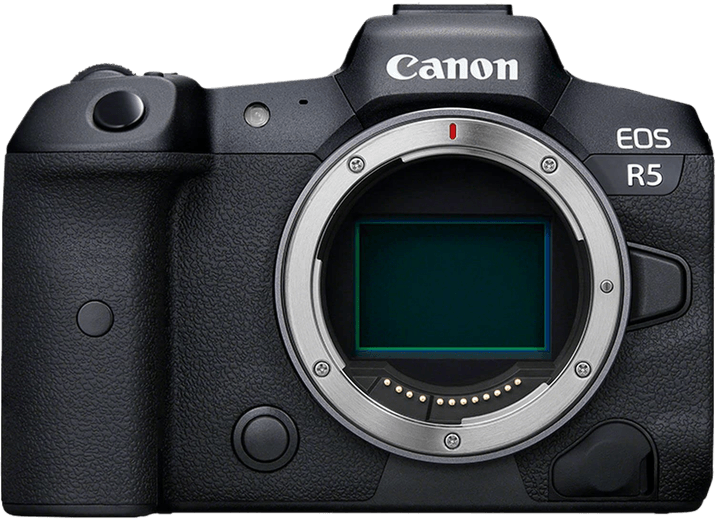
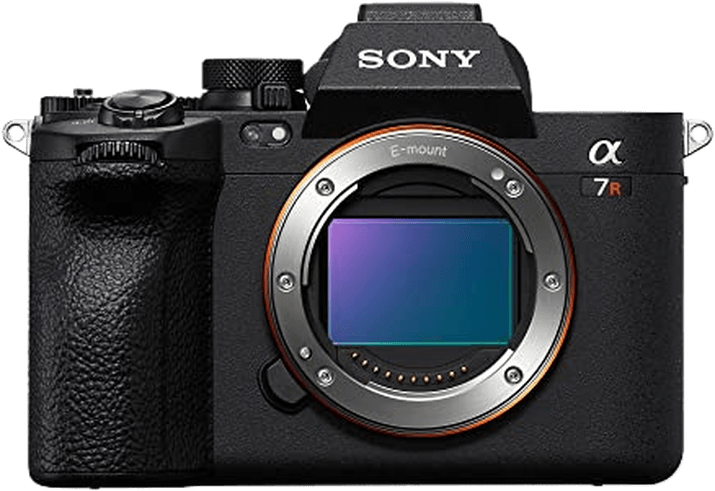
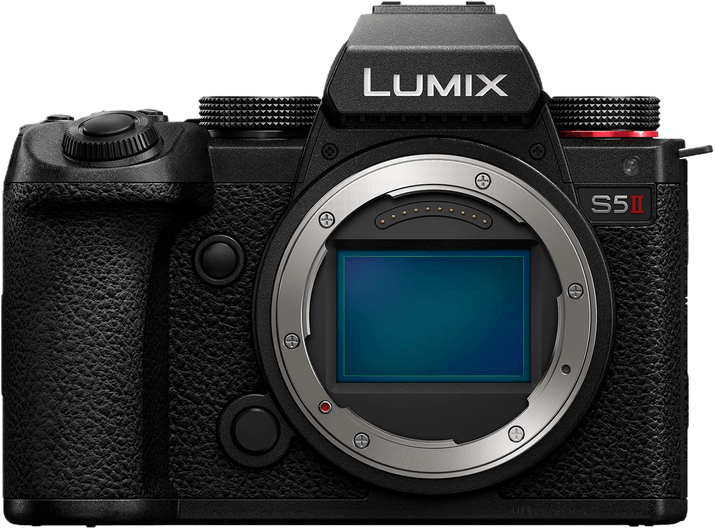
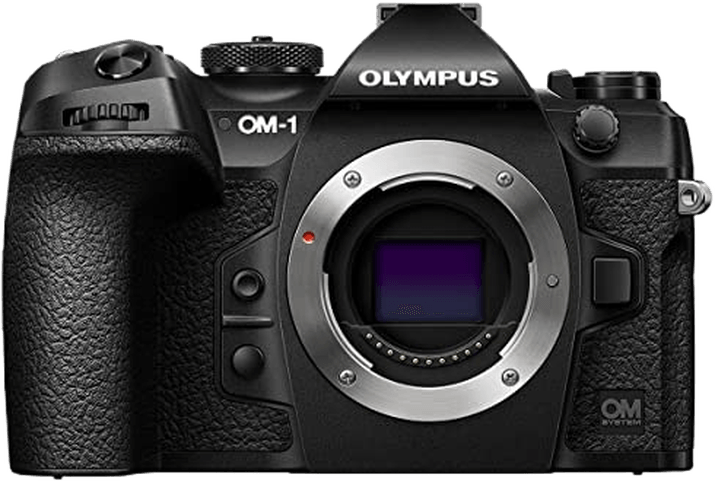
Now we look at the best mirrorless cameras in more detail. We examine all the important specification and features, helping you find the perfect camera to meet your needs as a photographer or videographer.

| Released |
Released
2022
|
| Sensor Format |
Sensor Format
|
| Lens Mount |
Lens Mount
Fujifilm X
|
| Megapixels |
Megapixels
40 MP |
| Autofocus Points |
Autofocus Points
425 |
| Maximum ISO (Native) |
Maximum ISO (Native)
12,800 |
| Frame Rate |
Frame Rate
15 fps |
| In-body Stabilization |
In-body Stabilization
|
| Max Video Resolution |
Max Video Resolution
|
| Other Key Features |
Other Key Features
Pixel-Shift Multi-Shot mode, HDMI output, tilting LCD, weather-resistant body, subject-detection AF, film simulation modes
|
| Best |
Best
All-round mirrorless camera
|
Despite being released a few of years ago, the Fujifilm X-T5 is still the best all-round mirrorless camera. Anyone from experienced beginners to top-level pros can use this camera with great success. It’s a powerhouse of a camera in a compact and stylish body. There’s little surprise the X-T5 is one of the most popular cameras out there.
A retro design echoes Fujifilm’s analog past and makes the X-T5 timelessly stylish. But the quality isn’t only skin deep. The camera has a lightweight yet durable skeleton but also weather-resistant for outdoor use.
Although the camera is packed with features, the X-T5 still has a compact body. That’s because it has an APS-C sensor. But that certainly doesn’t mean the camera is lacking any image processing power. Far from it.
The APS-C sensor has an incredible 40 MP resolution. That’s higher than most full frame mirrorless cameras. The low-light performance and dynamic range are slightly behind full frame models, but the overall image quality is staggering.
And if 40 MP isn’t enough, the camera also has a Pixel-Shift Multi-Shot mode. By combining several exposures, the X-T5 produces jaw-dropping 160 MP images. You need to stabilize the camera with a tripod, but the results are seriously impressive.
This mode is only possible thanks to the pixel-shift image stabilization system. This allows you to use slower shutter speeds with a reduced risk of motion blur or camera shake. It’s particularly helpful if you’re shooting in low light or using a telephoto lens.
Outstanding video features make this a brilliant hybrid camera. The glorious 4K footage is oversampled from 6.2K resolution, giving you better detail and clarity. Footage also has 10-bit 4:2:2 color sampling. You can also shoot 4K with a super-smooth 60 fps frame rate.
Boasting Fujifilm’s best autofocus system to date, you can shoot anything from portraits to sports photography. It has a sophisticated system that uses deep-learning AI for better subject detection and tracking.
The Fujifilm X-T5 has all the necessary trappings of a modern mirrorless camera. There’s a tilting LCD and Wi-Fi connectivity. It also has Fujifilm’s unique film simulation effects you can apply in-camera.

| Released |
Released
2023
|
| Sensor Format |
Sensor Format
|
| Lens Mount |
Lens Mount
Canon RF
|
| Megapixels |
Megapixels
24 MP |
| Autofocus Points |
Autofocus Points
3,975 |
| Maximum ISO (Native) |
Maximum ISO (Native)
12,800 |
| Frame Rate |
Frame Rate
6.5 fps |
| In-body Stabilization |
In-body Stabilization
|
| Max Video Resolution |
Max Video Resolution
|
| Other Key Features |
Other Key Features
Built-in flash, Wi-Fi and Bluetooth connectivity, slow-mo video, eye-detection AF
|
| Best |
Best
Mirrorless camera for beginners
|
The Canon EOS R100 is the best mirrorless camera for beginners. It’s easy to use, lightweight and compact, and affordable. It’s the perfect camera for anyone starting their photography journey or looking for an affordable camera for casual shooting.
It’s incredibly lightweight, weighing just over 350 g without a lens. It’s also compact, so you don’t need a fancy camera backpack to carry it around.
An APS-C sensor gives you a handsome 24.1 MP resolution. This is high for an entry-level camera, and the impressive picture quality will only fuel a beginner’s enthusiasm for photography.
The maximum ISO is only 12,800. It controls digital noise well, but it isn’t enough for very low-light situations. A 6.5 fps burst also isn’t the fastest, but it’s still enough for you to try your hand at sports photography.
With Canon’s Dual Pixel CMOS AF system, the autofocus is one of the highlights of the R100. Using a vast number of focus points, the camera is reliable when identifying and locking onto subjects. It even has eye-detection technology, which is ideal when photographing humans.
Every decent mirrorless camera needs video mode, and the R100 is no exception. You can record high-quality 4K video. The footage is cropped, and you’re limited to a 24 fps frame rate in 4K, but it’s still handy for budding filmmakers. You also have a 120 fps slow-motion mode when shooting in Full HD.
Downsides include a fixed screen non-touch screen, a lack of environmental sealing, and a disappointing battery life. However, it does have handy features like a built-in flash, bright electronic viewfinder, and wireless connectivity.

| Released |
Released
2005
|
| Sensor Format |
Sensor Format
|
| Lens Mount |
Lens Mount
Sony E
|
| Megapixels |
Megapixels
25.2 MP |
| Autofocus Points |
Autofocus Points
759 |
| Maximum ISO (Native) |
Maximum ISO (Native)
25,600 |
| Frame Rate |
Frame Rate
120 fps |
| In-body Stabilization |
In-body Stabilization
|
| Max Video Resolution |
Max Video Resolution
|
| Other Key Features |
Other Key Features
Global shutter
|
| Best |
Best
Mirrorless camera with global shutter
|
Sony has been a trailblazer in the mirrorless camera world for the last decade. But the Sony A9 III is a complete revelation in the photography world. It’s the first to boast a global shutter system, a complete game-changer for rapid-fire shooting.
A standard camera sensor activates its pixels in sequence, not all at the same time. This isn’t a problem with standard photography. But it can create distortion if you’re photographing something fast-moving in burst mode with the electronic shutter.
The Sony A9 III’s global shutter has no such problem. It activates all the sensor pixels at one time, thus eliminating distortion caused by movement. That means you can use the camera’s rapid 120 fps burst mode to its fullest extent.
You also get full AF tracking at full speed with no viewfinder blackout. It’s quickly becoming the best camera for professional sports photography.
The full frame backside illuminated sensor gives you a 24.6 MP resolution. That’s not as powerful as other Sony A cameras, but the picture quality is still fabulous.
One downside is that the ISO only goes as low as 250 ISO, so you can’t maximize picture quality by reducing it. The ISO does expand to 51,200 at the other end, so you do have low-light photography options.
5-axis image stabilization is another handy feature, allowing you to shoot in low light without camera shake. It’s easy to shoot from hand, so you can leave your tripod or monopod at home.
Its 1/80,000 max shutter speed is the best in the business, allowing you to capture any blink-and-you-miss-it moment. You’ll have razor-sharp sports shots every time.
You can also use the A9 III for high-quality sports videos. It records stunning 4K with a super-fast 120 fps frame rate. That gives you 4K slow-motion footage, which is ideal for recording fast action.
Sony’s excellent selection of compatible FE lenses is another strong point for this mirrorless camera. They also have a selection of dedicated sports lenses that match perfectly with the Sony A9 III.

| Released |
Released
2022
|
| Sensor Format |
Sensor Format
|
| Lens Mount |
Lens Mount
Nikon Z
|
| Megapixels |
Megapixels
20 MP |
| Autofocus Points |
Autofocus Points
209 |
| Maximum ISO (Native) |
Maximum ISO (Native)
51,200 |
| Frame Rate |
Frame Rate
11 fps |
| In-body Stabilization |
In-body Stabilization
|
| Max Video Resolution |
Max Video Resolution
|
| Other Key Features |
Other Key Features
Expandable ISO, Wi-Fi connectivity, rotating touchscreen, built-in stereo mic, eye tracking AF
|
| Best |
Best
Camera for vlogging and social media
|
The Nikon Z30 is a handy little mirrorless camera that’s ideal for vlogging and content creation. Compact, lightweight, and packed with useful features, it’s an all-in-one social media machine.
An APS-C sensor helps the camera keep it’s compact size. Also, a full frame sensor would be overkill for social media content. The 21 MP resolution is more than enough for eye-catching images for Instagram.
The low-light performance is surprisingly good, thanks to the expandable ISO range. You push it all the way to 204,800. Digital noise might be a problem at the very top of the scale, but the picture quality is good throughout.
Bright and clear 4K footage is ideal for high-level vlogging. The 30 fps frame rate also gives you smooth footage. There’s a 120 fps option when shooting in Full HD if you want slow-motion video.
A rotating screen makes it easy to record yourself. A red record light lets you know when the camera’s rolling. And the built-in stereo microphone also allows you to record high-quality audio without additional equipment.
The AF system has been optimized for vlog-style content production. It has eye-detection capabilities, locking on and tracking your eyes as you move about the frame. It’s ideal for animated talkers.
The Z50 also doubles as a high-resolution webcam, so you can use it for live streaming. USB charging also allows you to record long-form videos without fear of running out of battery.

| Released |
Released
2020
|
| Sensor Format |
Sensor Format
|
| Lens Mount |
Lens Mount
Canon RF
|
| Megapixels |
Megapixels
45 MP |
| Autofocus Points |
Autofocus Points
1,053 |
| Maximum ISO (Native) |
Maximum ISO (Native)
51,200 |
| Frame Rate |
Frame Rate
20 fps |
| In-body Stabilization |
In-body Stabilization
|
| Max Video Resolution |
Max Video Resolution
|
| Other Key Features |
Other Key Features
First value
|
| Best |
Best
Video resolution
|
The Canon EOS R5 is an impressive mirrorless camera by many metrics. It’s one of the most popular cameras at the professional end of the market. And when you see the specs, you’ll understand why.
Equipped with a full frame CMOS sensor and powerful DIGIC X processor, the R5 delivers stunning 45 MP images. The overall image quality is truly impressive. You can also maximize image quality by expanding the low ISO to 50.
The ISO is expandable at the other end, too. You can push it up to 102,400, which allows you to shoot in dark situations. There’s very little noise even at the very top of the scale.
5-axis image stabilization allows you to work with slower shutter speeds. There’s 12 fps burst shooting with the mechanical shutter. That’s 12 fps at full resolution. Or, you have the electronic shutter with a 20 fps burst rate.
If you’re not impressed already, the video features might swing your vote in the R5’s favor. You might be accustomed to seeing mirrorless cameras with 4K resolution. Not many can shoot 8K video, but the Canon EOS R5 is one such camera.
Glorious 8K resolution with pro-grade 10-bit 4:2:2 color sampling gives you cinema-standard footage. You can also shoot 4K slow-motion video at 120 fps.
Canon’s Dual Pixel CMOS AF system is the best in the business, and the R5 is a great example. With over 1,000 focus points, it gives you near full-frame coverage. The face and eye-detection and tracking capabilities also make it super reliable for all types of photography.
Dual card slots allow for more digital storage. A rotating touchscreen helps you shoot from difficult angles or record yourself. The body is also weather-sealed, so you can use it outdoors in difficult conditions.
If you’re interested in the Canon EOS R5, it’s worth checking out the best Canon RF lenses.

| Released |
Released
2022
|
| Sensor Format |
Sensor Format
|
| Lens Mount |
Lens Mount
Sony FE
|
| Megapixels |
Megapixels
61 MP |
| Autofocus Points |
Autofocus Points
693 |
| Maximum ISO (Native) |
Maximum ISO (Native)
32,000 |
| Frame Rate |
Frame Rate
10 fps |
| In-body Stabilization |
In-body Stabilization
|
| Max Video Resolution |
Max Video Resolution
|
| Other Key Features |
Other Key Features
50 ISO, 4K at 60 fps, weather-sealed, external audio ports, dual card slots, Sensor-Shift High-Res mode
|
| Best |
Best
High-resolution mirrorless camera
|
If you’re looking for a high-resolution mirrorless camera, the Sony A7R V is exactly what you need. It has the most powerful full frame sensor of any mirrorless camera, outgunning many medium format cameras. It’s a pro machine that pushes the boundaries of what’s possible with a mirrorless camera.
The full frame BSI-CMOS sensor has a whopping 61 MP native resolution. Resolution like that is tough to handle, but the camera is equipped with Sony’s advanced BIONZ XR engine. There’s very little lagging or buffering despite the large file size of each image.
If 61 MP images are not big enough for you, you can use the Sensor-Shift High-Resolution mode. By creating a composite of several exposures, the A7R V can produce image with a staggering 241 MP resolution. That’s insane image quality. Overkill for most photographers, but an incredible feature if you need to enlarge images.
Burst shooting is limited to 10 fps. But that’s 10 frames of 61 MP per second, so we can’t complain. It can also buffer 583 RAW images without pause. The resolution is also overkill for sports photography, so sports shooters are better off with the A9 III.
You can expand the ISO down to 50 to maximize picture quality. Built-in stabilization helps you in low light. The camera also has dual card slots, which is essential with resolution this high.
A 693-point AF system gives you excellent focusing, with face and eye detection and tracking. It also has an AI processing unit that helps identify human forms. The system can also identify other subject types like animals, insects, and vehicles.
The video features are pretty impressive, too. You get fabulous 8K video footage. The frame rate is limited to 24 fps at full resolution, but you can shoot at 60 fps in 4K. The color sampling is also 10-bit 4:2:2, so you’re looking at professional-level film production.
See more high-resolution cameras in this link.

| Released |
Released
2023
|
| Sensor Format |
Sensor Format
|
| Lens Mount |
Lens Mount
Leica L
|
| Megapixels |
Megapixels
24 MP |
| Autofocus Points |
Autofocus Points
779 |
| Maximum ISO (Native) |
Maximum ISO (Native)
51,200 |
| Frame Rate |
Frame Rate
9 fps |
| In-body Stabilization |
In-body Stabilization
|
| Max Video Resolution |
Max Video Resolution
|
| Other Key Features |
Other Key Features
First value
|
| Best |
Best
Hybrid mirrorless camera
|
Panasonic can’t compete with the likes of Canon, Nikon, and Sony in terms of output. But they have carved out a niche for themselves in the camera market. They are pioneers of the hybrid camera, with their machines being just as proficient with videography as they are with photography.
The Panasonic Lumix S5 II is the perfect example of this. It’s just as useful to videographers as it is to photographers, allowing users to switch between photo and video production without additional cameras.
Its full frame sensor gives you beautiful images with a 24 MP resolution. That’s not spectacular for a full frame camera, but it has excellent low-light performance and a wide dynamic range thanks to the larger picture size. You also have a 50 ISO option to get the most out of the sensor in bright light.
6K footage with a 30 fps rate and 10-bit 4:2:2 color gives you sensation video production abilities. You also have super-smooth 4K with a 60 fps frame rate and a 120 fps Full HD option for slow-motion footage.
You have both waveform and vector scope video options. There’s a pre-shooting buffer, so you never miss the beginning of your scene. The S5 II also has a cooling system that prevents the camera from overheating when shooting long videos.
The camera body has ports for external microphones, headphones, and monitors. A rotating screen allows you to record yourself. It also has webcam functionality for live streaming and conference calls.
An advanced AF system with reliable subject tracking ensures you always get sharp shots and accurate video focusing. The built-in image stabilization also helps you in low-light situations. You can also charge the camera using a USB cable, so the camera can record for long periods without running out of juice.

| Released |
Released
2022
|
| Sensor Format |
Sensor Format
|
| Lens Mount |
Lens Mount
Micro 4/3
|
| Megapixels |
Megapixels
20 MP |
| Autofocus Points |
Autofocus Points
1,053 |
| Maximum ISO (Native) |
Maximum ISO (Native)
25,600 |
| Frame Rate |
Frame Rate
10 fps |
| In-body Stabilization |
In-body Stabilization
|
| Max Video Resolution |
Max Video Resolution
|
| Other Key Features |
Other Key Features
120 fps burst rate, High-Res Shot mode, weather-sealed, dual card slots
|
| Best |
Best
Micro Four Thirds camera
|
The Micro Four Thirds (MFT) camera is a different type of mirrorless camera. They are only produced by OM System (formerly Olympus) and Panasonic, and they are compact interchangeable lens cameras with advanced features.
The OM System OM-1 is the flagship MFT camera. It’s the perfect example of what this type of mirrorless camera can be. It’s compact yet durable, has advanced features, and delivers brilliant media.
Micro Four Thirds sensors are smaller than APS-C sensors. That means you don’t get eye-watering resolutions seen in the X-T5 or A7R V. However, the OM-1 produces gorgeous images with a healthy 20 MP resolution. The low-light performance and dynamic range are surprisingly good for a small-sensor camera.
If you do need more power, the OM-1 has a trick up its sleeve. With the High-Resolution Shot mode, the camera can produce 50 MP images. You can also use this mode when shooting from hand. You don’t need to use a tripod.
It’s another great option for video production, shooting 4K with a 60 fps frame rate. That’s uncropped 4K footage with 10-bit 4:2:2 color sampling. You also have a super-slow-mo option with a 240 frame rate in Full HD.
Ports for audio devices help you with sound recording. You can use the camera as a webcam for live streaming. And USB charging allows you to record long-form videos without the camera dying on you.
A 1,053 autofocus system gives you reliable focusing, even in low light. A built-in stabilization system also helps you shoot in darker environments, giving you 8 EV stops of compensation. Thorough weather sealing also allows you to use the camera outdoors in bad conditions.
We’ve answered some of the hottest questions relating to mirrorless cameras to help you in your search. We look at the advantages of opting for a mirrorless, and we find out if they are beginner friendly. We hope this informations helps you find the best mirrorless camera.
All the major camera manufacturers are now dedicated to producing mirrorless cameras. Canon and Nikon make mirrorless cameras for all skill levels, while Sony mainly focuses on high-end machines. Panasonic and OM Systems (formerly Olympus) also produce their mirrorless cameras.
All the new technical advances are found in mirrorless cameras. Higher sensor resolution, faster shutter speeds and bursts, and better video features. We’re also seeing more advanced AF systems and better built-in stabilization.
Mirrorless cameras also tend to be lighter and more compact than DSLRs. There’s no mirror and shutter system, so there are fewer internal components. This results in a lighter camera body that’s easy to hold and carry around with you.
We still love DSLR cameras. But there’s no doubt their star has faded and we are very much living in the age of the mirrorless camera.
DSLRs were never known for their video features, although some do have 4K. But mirrorless cameras have taken video features to a whole new level. All mirrorless machines now have 4K video recording as standard, even entry-level models like the Canon EOS R100. We even have 8K video from cameras like the Canon EOS R5.
Mirrorless cameras also have much faster burst speeds. The mechanical shutter of the DSLR makes them more sluggish in this department. Even experienced sports and wildlife photographers are switching to mirrorless machines.
These days, DSLRs are noticeably chunky and heavy compared to mirrorless cameras. Some still like the heft of a DSLR, but a lighter camera can make a big difference if you’re carrying a lot of gear.
DSLRs are still great cameras for photography purists. But mirrorless cameras have taken video features to a whole new level. They are sleek, hybrid cameras that meet the needs of modern media creators.
Check out our list of the Best DSLR Cameras if you want to make a comparison for yourself.
There are some excellent entry-level mirrorless cameras for beginners. While mirrorless cameras steal headlines on account of their incredible technological breakthrough, this only represents the pro-end of the market. There are plenty of options for beginners, too.
The Canon EOS R100 is our beginner offering in this list. It’s easy-to-use design, brilliant specs, and affordability make it the perfect starting point for a photography novice. You can go for the Canon EOS R10 if you want a few more advanced features.
But that’s not your only option. The Nikon Z30 is another great option for beginners, especially if they’re interested in video. The Nikon Z50 is another alternative, with excellent photography and video features in a compact body.
See all the Best Cameras for Beginners by clicking this link.
The best mirrorless camera helps you achieve your goals when producing media. Whether you’re a photographer or videographer, the right mirrorless camera will take your work to the next level.
The technological advances in the mirrorless market have expanded the parameters of creativity. Amateurs can produce pro-level images or cinema-quality home movies.
The Fujifilm X-T5 is our favorite mirrorless camera right now. It’s a hybrid machine with high-resolution images and video. It’s packed with features and looks fantastic. But as we’ve seen, there is a wide range of mirrorless cameras available right now. The trick is finding one that suits your vision.



